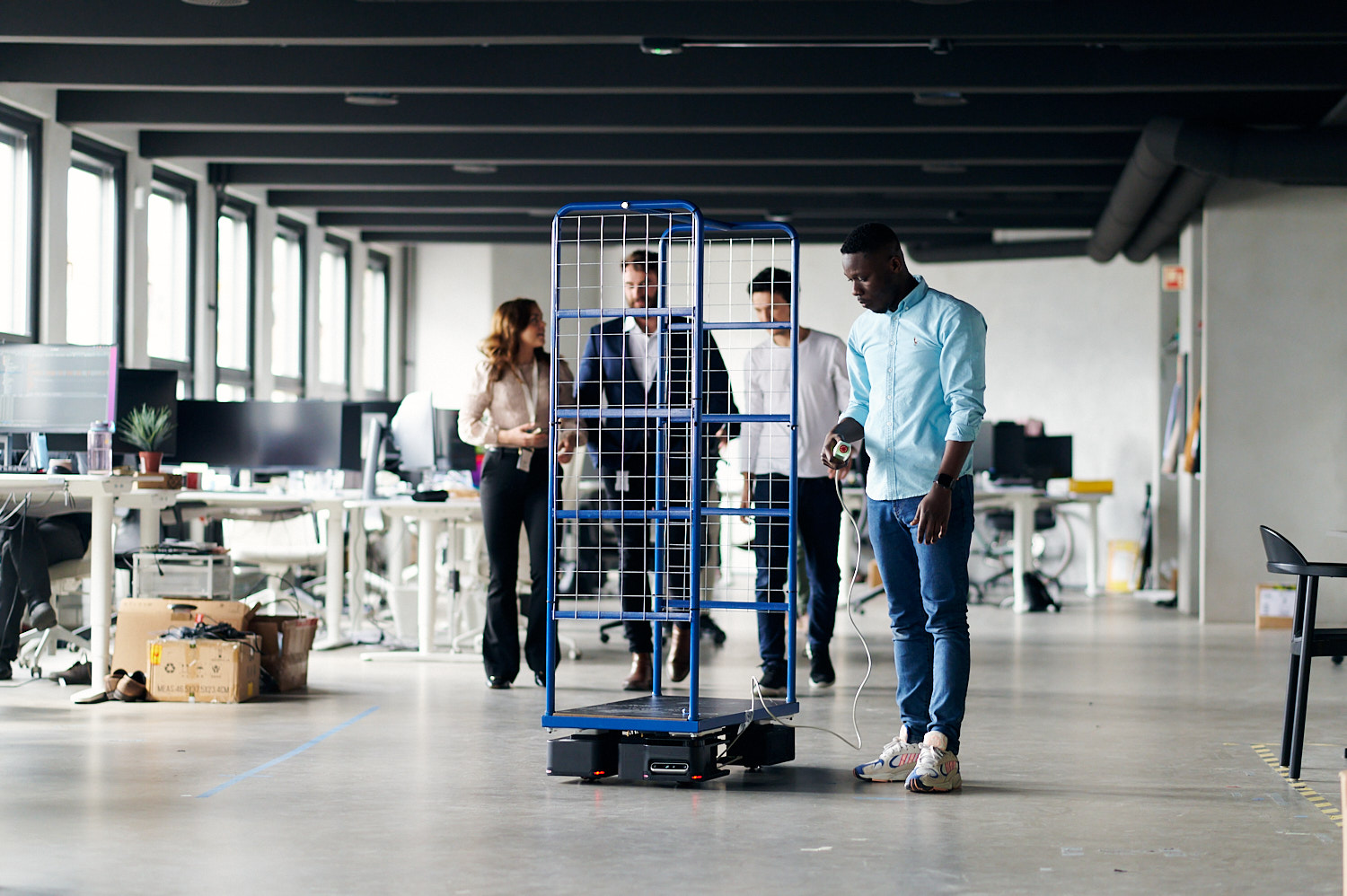The Human-Machine Partnership: How Humans and Autonomous Robots Collaborate for Success
In the ever-evolving landscape of technology and automation, the interplay between human expertise and robotic automation is revolutionizing industries and how people work. This interplay is evident in the environments where "autonomous mobile robots" (AMRs) are deployed alongside humans. This article will go through this exciting collaboration, shedding light on its implications, advantages, and the boundless possibilities it offers.
The Rise of AMRs
AMRs are robots that can move in their environment without direct human intervention. They are designed to operate autonomously, making decisions based on their sensors, cameras, and pre-programmed instructions. The first AMRs were Elmer and Elsie, created in 1940 by Dr. W. Grey Walter. They were also called the "tortoises" because of how they looked and moved. Elsie and Elmer consisted of old alarm clocks and war surplus materials. They had a single light or touch sensor hooked up to two different paths, running two other motors acting as two separate neuron brains.
Today, AMRs encompass various automated vehicles, such as self-driving cars, autonomous drones, and warehouse robots. They are designed to operate with minimal or no human intervention, enabled through advanced technologies like AI, sensors, and precision engineering. Recent years have witnessed a significant surge in the development and deployment of AMRs across various sectors, driving numerous benefits.
The Power of Human Expertise
While AMRs have made remarkable strides regarding navigation and automation, human expertise remains indispensable.
1. Design and Development:
AMRs are products of human ingenuity. Engineers, designers, and programmers develop the algorithms and hardware that power these systems. Their expertise is pivotal in creating safe, efficient, and reliable technology.
2. Data Annotation and Training:
Machines learn from data, and humans provide the context. Data annotation experts curate datasets, making AMRs able to recognize objects, understand traffic signals, and react to various scenarios. Human expertise is critical to training AI models effectively.
3. Maintenance and Repairs:
Like all technology, AMRs require maintenance and repairs. Skilled technicians ensure these systems run smoothly, diagnosing issues and implementing fixes when needed.
4. Safety Oversight:
Human operators are often present to monitor the performance of AMRs and take control in case of emergencies. This safety net is essential in building trust with the public and regulatory bodies.
The Human-Machine Partnership in Action
The human-machine partnership is at its best when humans and AMRs work in harmony. Here are a few scenarios where this already happens:
1. Last-Mile Delivery:
In the e-commerce industry, autonomous delivery robots, guided by AI, collaborate with human delivery drivers for the final leg of a package's journey. This blend of human knowledge and robotic efficiency ensures faster, more reliable deliveries.
2. Agriculture and Precision Farming:
Autonomous tractors equipped with AI and GPS systems allow farmers to increase efficiency and reduce waste. However, farmers still play a crucial role in decision-making, ensuring the right crops are planted and harvested at the right time.
3. Autonomous Vehicles on the Road:
The transition to self-driving cars is underway, with humans serving as backup drivers to supervise the vehicle's actions. Their presence addresses unforeseen situations and builds public trust in autonomous driving technology.
4. Material Handling Automation:
In large manufacturing plants, warehouses, and healthcare facilities, robots manage material handling and fulfill missions with speed and precision. Human workers oversee the process of handling tasks that require finesse or decision-making beyond the capabilities of machines. Together robots and humans drive throughput and efficiency.

Considerations about the Human-Machine Partnership
The collaboration between humans and AMRs offers many advantages, reshaping industries and pushing boundaries.
Some key benefits:
1. Improved Efficiency:
Autonomous systems excel at repetitive, precise tasks, while humans are creative and adaptable, improving efficiency across various industries.
2. Safety and Reliability:
Humans provide a safety net, ensuring that AMRs operate flawlessly. This combination of advanced technology and human oversight reduces the likelihood of accidents and system failures.
3. Scalability:
Autonomous systems can work 24/7 without fatigue, while humans can work strategically, which allows for increased scalability, particularly in industries with fluctuating demands.
4. Innovation and Problem-Solving:
The human element encourages innovation and creative problem-solving. While machines follow programmed rules, humans can adapt to new and unexpected challenges.
Limitless Possibilities
The potential of the human-machine partnership in the realm of AMRs is limitless. As technology advances, more seamless collaboration between humans and robots is expected. Some exciting possibilities include:
1. Healthcare Support:
Autonomous robots could assist medical professionals by transporting supplies and handling routine tasks, allowing doctors and nurses to focus on patient care.
2. Exploration and Research:
Scientific research and exploration have already deployed autonomous drones and robots. They could venture further into the unknown with human guidance, whether in deep space or deep-sea exploration.
3. Disaster Response:
Autonomous vehicles and drones with search and rescue capabilities could work with human responders to improve disaster relief efforts.
Challenges and Considerations
While the human-machine partnership is promising, it has challenges and ethical considerations. These include issues related to data privacy, job displacement, and the ethical use of AI in decision-making processes.
The Future
The synergy between human expertise and robotic automation reshapes industries and unlocks infinite possibilities. As technology advances, this partnership continues to evolve, leading to a future where humans and machines collaborate seamlessly to drive innovation, efficiency, and progress.
wheel.me has successfully assisted major players in manufacturing, automotive, logistics and healthcare to automate material handling. Are you interested in learning how humans and robots collaborate to increase throughput and efficiency?
.png)